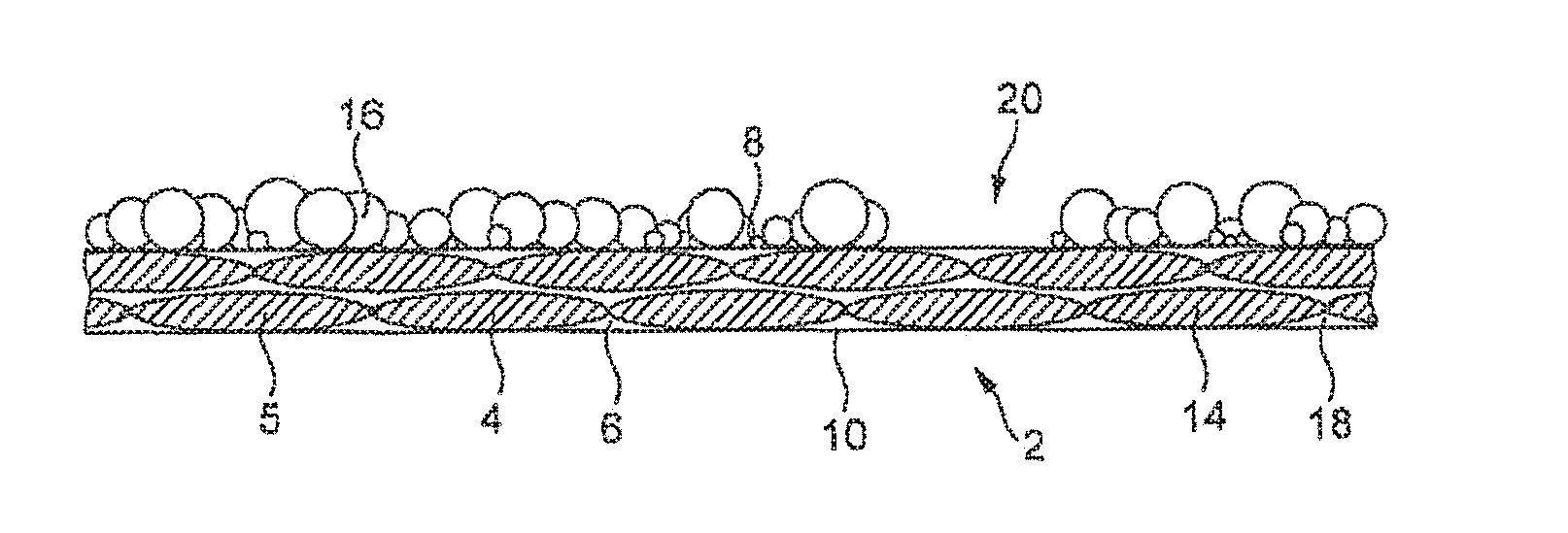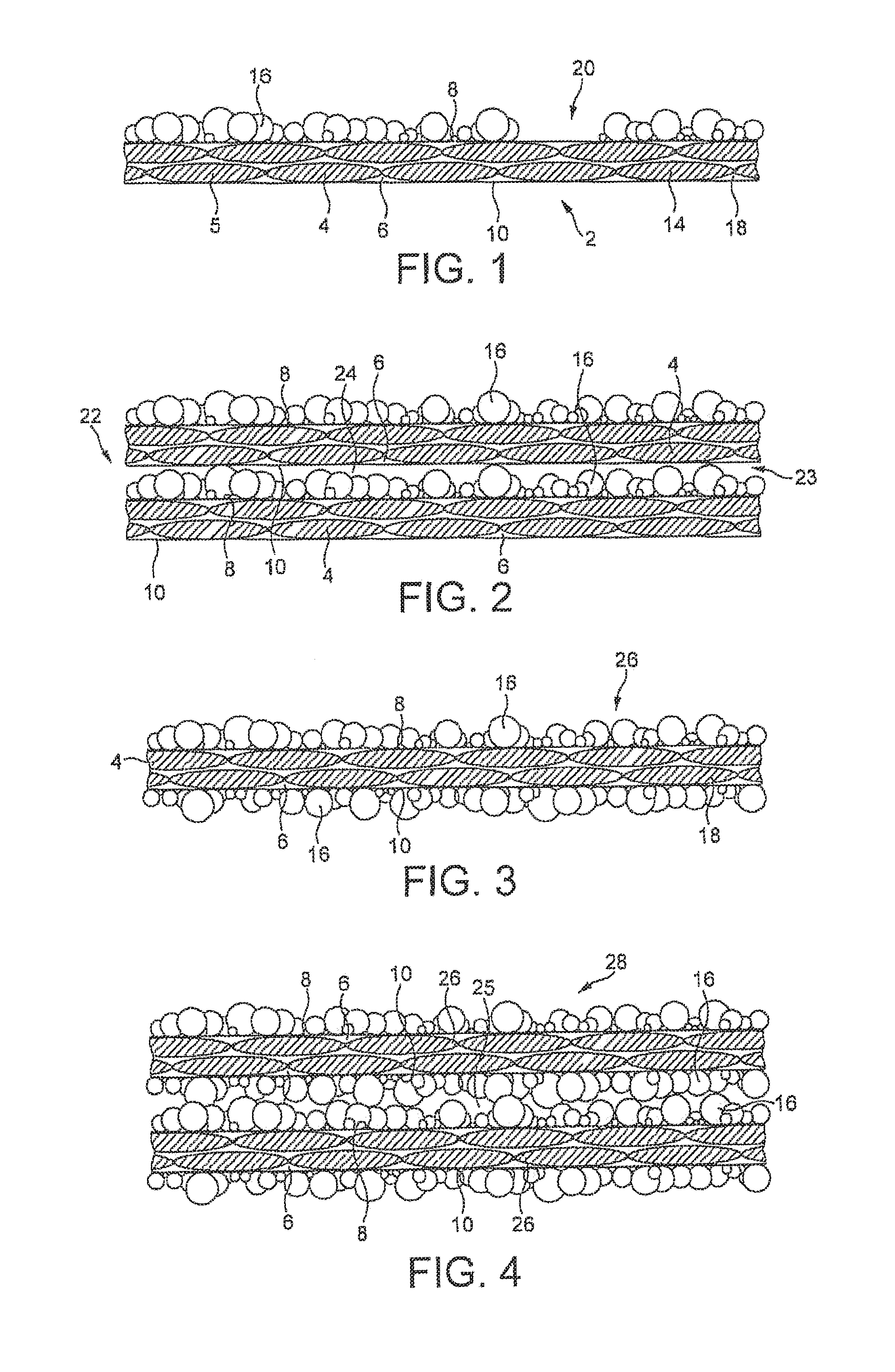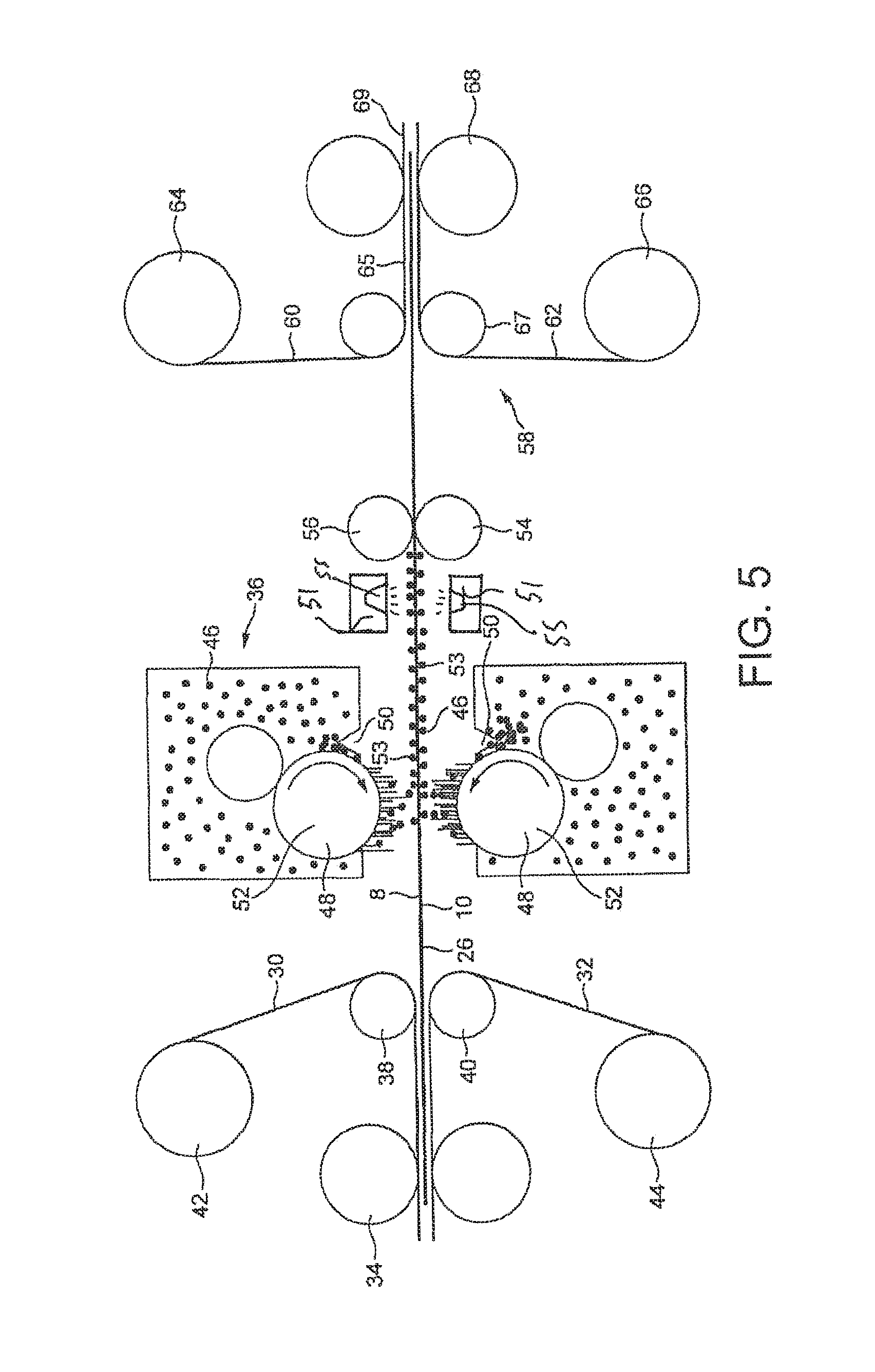Prepreg for manufacturing composite materials
a composite material and pre-prep technology, applied in the direction of synthetic resin layered products, other domestic articles, coatings, etc., can solve the problems of significantly reducing the mechanical properties of the composite material, air can be trapped, inter-ply voids can exist, etc., to improve the fracture toughness, improve particle dispersion, and improve the effect of mechanical properties
- Summary
- Abstract
- Description
- Claims
- Application Information
AI Technical Summary
Benefits of technology
Problems solved by technology
Method used
Image
Examples
Embodiment Construction
[0093]Referring to FIGS. 1 and 2, there is shown a prepreg 2 in accordance with a first embodiment of the present invention. For clarity of illustration, some dimensions in the drawings are exaggerated and only some of the fibres are shown.
[0094]The prepreg 2 comprises a layer of fibrous reinforcement 4, illustrated as a plurality of tows or fibre bundles 5, which is substantially fully impregnated by a matrix resin 6. The full impregnation provides that the opposed major surfaces 8, 10 of the prepreg 2 comprise resin surfaces. The resin 6 is typically an epoxy-functional resin including a latent curing agent, as is known in the art. Other resins, particularly thermosetting resins, may be employed. The fibrous reinforcement 4 comprises fibres 14 made of glass, carbon, aramid or similar materials. The fibres 14 are unidirectional (UD), being oriented in a common longitudinal direction perpendicular to the plane of the drawings of FIGS. 1 and 2. Preferably, the prepreg 2 is elongate a...
PUM
| Property | Measurement | Unit |
|---|---|---|
| particle size | aaaaa | aaaaa |
| particle size | aaaaa | aaaaa |
| particle size | aaaaa | aaaaa |
Abstract
Description
Claims
Application Information
 Login to View More
Login to View More - R&D
- Intellectual Property
- Life Sciences
- Materials
- Tech Scout
- Unparalleled Data Quality
- Higher Quality Content
- 60% Fewer Hallucinations
Browse by: Latest US Patents, China's latest patents, Technical Efficacy Thesaurus, Application Domain, Technology Topic, Popular Technical Reports.
© 2025 PatSnap. All rights reserved.Legal|Privacy policy|Modern Slavery Act Transparency Statement|Sitemap|About US| Contact US: help@patsnap.com



